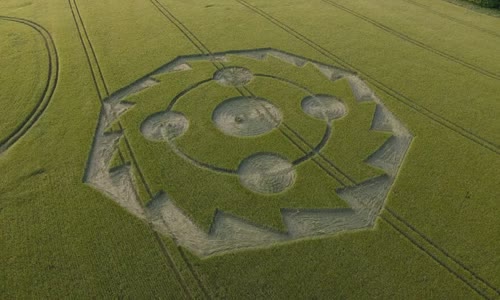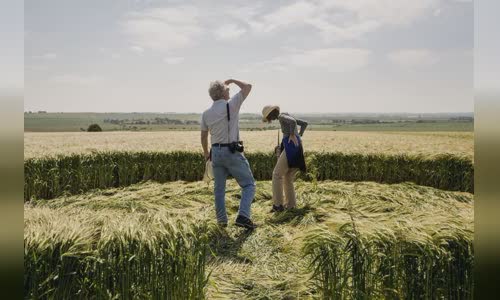The complex circles on the British fields in the 1980s were thought to be an alien phenomenon, before their author appeared.
On the vast wheat field in the Coonolt farm area, near the border of Hampshire and Wiltshire, southern England, visitors can easily notice a strange trace.

Photo: NY Times
This image reproduces mysterious patterns that have caused a stir in the 1980s and 1990s, sparking conspiracy theories about supernatural phenomena, aliens, abnormal weather or dance tests.
Three decades after the mysterious circle fever in the field, this phenomenon now has a new meaning, is said to be a reminder that even before social networks and the internet were born, pranks and information are not available.
They are also evidences that some stubborn people still decide to cling to the conspiracy theory, despite science that have provided evidence to refute their thesis.
The giant pattern appeared in the Coonolt farm area, near the border of Hampshire and Wiltshire, south of England, on May 22.
On September 9, 1991, British newspaper published an article on the world of pranks on the first page, revealing two men from Southampton, who secretly made more than 200 patterns in the field like that in the Cross
Doug Bower, 67, and a friend, Dave Chorley, 62, admitted to reporter Graham Brough that they had started using rope tied wooden planks at both ends to create circles on the rice field.
They enjoy these strange patterns that attract the attention of the media, even starting to be copied around the world.
Brough reporter, currently 62, then verified the statement of the two by coming to check the warehouse behind Mr. Bower's house and discovered more than 200 round drawings.
According to Brough, many people claim to be an expert on aliens have assured that such large circles cannot be created by humans, but Bower and Chorley have proven to the reporter how they have done.
They kicked the wheat down without breaking the root, and using the rope tied to a pile plug in the center to form a large circle, Brough reporter said.
He watched this process for a week and never laughed so much in his life.
This is a modal window.
Beginning of dialog window.
End of dialog window.

Photo: Times
Brough and his colleagues returned to the scene of the two men who created a pattern in the field in Kent, then invited Pat Delgado, co -authored the best -selling books on the circle in the field, to see.
When watching the video, Delgado confirmed that these circles could not be a cheat, even declaring that he felt that aliens had just left.
When Bruyu's reporter told Delgado the truth and invited two aliens to come, Delgado immediately realized Bower and Chorley because they were often the first to be present at the scene whenever a new pattern appeared on the field.
Oh my god, this is the reason why the two of them were always there!
However, Colin Andrews, co -authored books with Delgado, quickly persuaded his friend to withdraw his acknowledgment, saying that Bower and Chorley could not create patterns on other fields around the world.
Those who want to believe in aliens and other supernatural things ignore evidence, no matter how obvious they are, Rob Irving, lecturer at the University of Gloucestershire, UK, said.
American tourists explore round patterns in the field in Sixpenny Handley, Southeast England.
Irving founded the Association of Round Patterns with friends and started simulating Bower and Chorley's work.
Some members of Mr. Irving's group have earned tens of thousands of dollars to shape on the fields required by customers, including brands like Nike, Mitsubishi or Hello Kitty, usually at positions to
However, so far no one has admitted to creating patterns in the field in Coonolt on May 22.
The curious people also caused greater damage than this circle, the farmer said, saying that they were considering cutting the wheat around the circle to prevent curious people from coming to see.
Many mysterious circles lying close to each other are like a snake longer than 100 m long on the wheat field in Wiltshire, England last month.
Gyoda people planted rice into paintings to promote traditional culture to international guests on the occasion of the Tokyo Olympic Games.



 Rebeca Shreve
Rebeca Shreve







